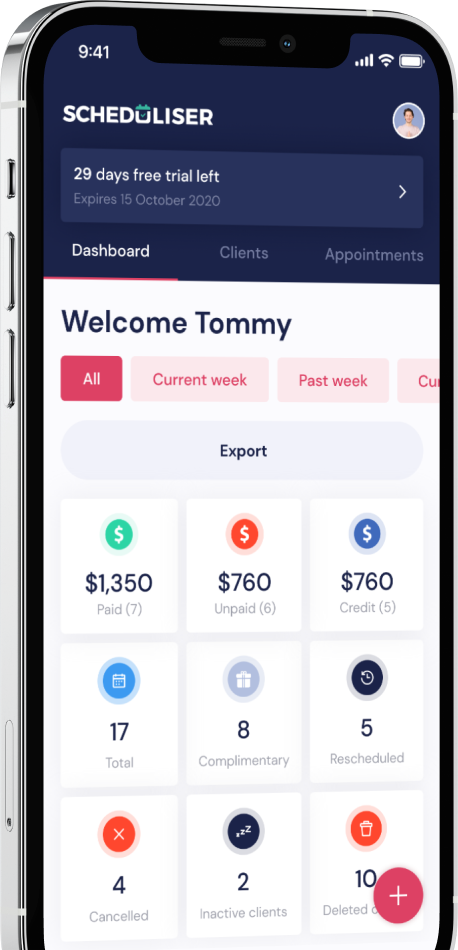How to start a personal training business in three steps

The onset of COVID 19 has encouraged a lot of people to rethink their lives and in particular, their career satisfaction, or dissatisfaction, as the case may be. If this pandemic has taught us anything, it is that life is short and no matter what time we have left on Earth, we may as well be spending it doing something we love.
Being a personal trainer suit you?
If you’ve ever accessed a Personal Trainer’s services, you’ll already know the importance of them looking fit and healthy. No one wants to listen to advice from someone who does not look like they can hold their own in a gym, or at least lift their own body weight.
Secondly, it’s important that you are happy to work at different times of the day. Often clients want to work out before or after work, so if you’re not an early riser, this may prove difficult in the long run.
Thirdly, you need to be good at managing your own schedule, although there is now technology available, that can make this easier with apps and other programs specific to the fitness industry.
Steps to starting your personal training career
For those of us who are serious about fitness, moving into the health and fitness industry can make a lot of sense. Whether you want a side hustle or something more full-time, becoming a personal trainer can be extremely fulfilling. But how do you get started?
1. Get qualified
While the industry currently has some limited regulations for operating a personal training business in Australia, it is essential that all Personal Trainers have the right qualifications. Depending on where you are based, there are a number of different personal training certifications that you can access starting from a Certificate 111, which only provides limited career options, or a Certificate IV in Fitness, Diplomas, or a Degree in Human Movement or Exercise Science. Some of these courses take less than a year, and in some cases, depending on your background, may only take a matter of months. There are various learning modes available and they can be accessed and completed online or through a blended delivery of face-to-face and online. TAFE and specialty fitness academies offer courses throughout the year.
2. Choose your location
There are some Personal Trainers (also known as PTs) who are associated with a gym and they may even be paid a salary to be exclusive to that gym. More often though they work as freelancers and or a combination of both. The association with a gym can provide more stability however you will make more money if you are operating on your own. Of course, the downside to operating your own independent business means you are not going to get referrals from the gym, so you’ll have to undertake your own marketing to attract and retain your clientele.
If you choose to operate outside of a gym environment, you’ll need to decide how far you’re willing to travel. Most clients want you to come to them, so you have to factor that in before you start accepting new clients. You won’t want to knock back business, especially when you’re starting out, but you also can’t afford to waste too much time in transit and losing valuable before and after work hours.
An additional consideration is where you are going to offer your training. Before you make your decision, do some research into your local Council bylaws, as there are some who will charge you to operate in public facilities. Make sure you are aware of your rights and responsibilities as you don’t want to be fined for doing the wrong thing.
3. Plan your business model
This includes planning for your required cash flow, marketing activity, pricing, and services offer. You may wish to become a niche provider, possibly catering to new Mums, or maybe you want to focus on older people who want to keep their mobility. Whatever you choose, it’s a great idea to research if this niche will provide the size of clientele you’ll require in order to turn a profit.
Once you have determined your business requirements, you should put them together in a business plan so you can calculate the number of clients you’ll need and the cost per client you can charge (and that the market will accept), in order to make it a worthwhile career option. If your plan does not support enough money to live on, you may be better off keeping it as a side hustle. Once you have created a client base, it will be easier to grow the business into a full-time concern.
It’s critical to consider insurance cover and risk indemnity as part of your costs. You are working with people who may develop injuries, so you need to ensure you are not liable for any incidents occurring during training. Privacy is also an issue and unless you are using software like Scheduliser, which manages your clients’ data in a secure environment, you’ll need to address your privacy policy and ensure you have safeguards in place.
Finally, don’t forget that once you have determined your target market, you have to make this clear in your marketing material, whether using digital or traditional channels, because a focussed message creates a better chance of cut through in a crowded market.
For more information on managing clients or growing your personal training business see the Scheduliser app.
Scheduliser helps you manage your PT clients in an easy-to-use platform with unlimited client capacity, auto appointment reminders, and cancelation notices, and in-built business insights to help you increase your return, grow your business and save valuable time and money.









